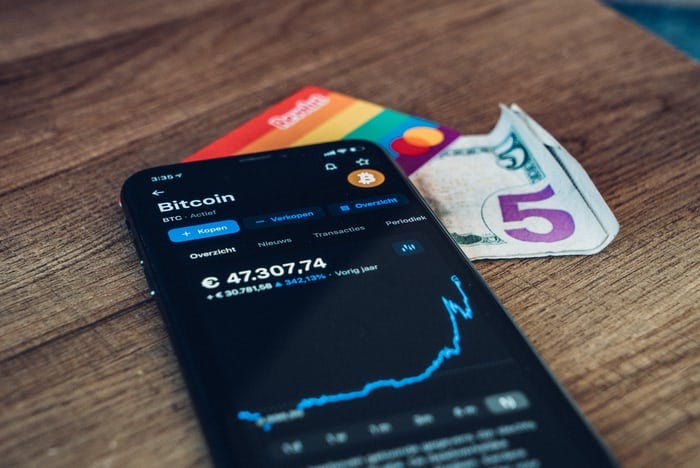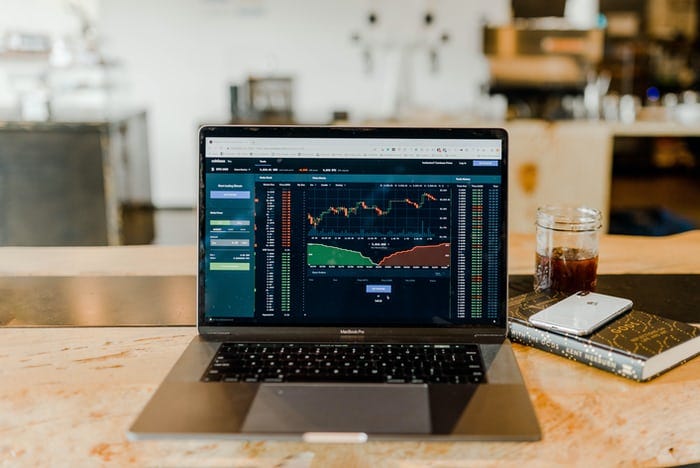Myth: You need money to make money.
As hard as this is to believe, you really don’t need much.
But what you do need is a willingness to learn, be patient and be 100% comfortable with making mistakes.
The first time I started trading was back in my middle school economic’s class. I don’t remember what I bought or sold but all I know is that I lost $300.
At the time, since it wasn’t my money, it didn’t feel like a lot at the time. It was managed by my school’s fund and I had used double the amount that I should’ve.
Yet, after all, it was electronic money on Robinhood so it isn’t real right?
That’s the problem. Electronic currency and retail trading doesn’t feel like investing. It’s a game and that’s where most investors go wrong. They associate it with fun and casinos instead of long term growth and goal setting.

3 Things I Learned From The Loss
1) You are not smarter than the market nor can beat it
No matter how much experience you have, you will not beat out the market. Yes, historically there are black swan evens and crises every 5–10 years, yet that doesn’t mean there will be a housing crisis every time. After all, they are always different!
Who expected a mortgage crisis in ’08 and a Chinese bat infection in 2020?
Keep your eyes open, keep your ego at bay and always plan to readjust.
That’s why passive investing is on your side.
2) Passive investing has historically always beaten out active investing (day trading)
Passive Investing: Long term research investing approach to buy a stock market index as a whole. Uses a specific benchmark in order to match its index which results in lower fees and lower risks yet aids in endless return over time.
Active Investing (more risky and not worth it-economic class mistake):
Hands-on approach to beat the stock market with frequent buying and selling to outperform a specific benchmark or index. Strive for superior ego boosting returns which results in high fees, loss, headaches, wasted time and risks.
3) The Best Way to Learn How To Invest Is To Loose
Loose big so you can win big. Mistakes are a feeding ground for opportunity. You know how it felt to loose that $1k because investing FOMO is real. The next time you want to trade you will stop and think so that feeling doesn’t come back.
So how much money do you need to start?
A certain sum that you won’t spend over.

Investing 101
These days, it’s easier than ever to invest. You don’t need to call up a trader at an investment bank to place trades on your behalf anymore.
There’s no excuses. Even with a couple of bucks you can log onto Robinhood, WeBull and personally, I would recommend Vanguard, Fidelity or Charles Swab, the most reputable brokerage institutions out there that don’t haul trading, default on clients, advertise trades based on how much commission the retailer will earn, not a fiduciary and favor hedge funds, cough cough referencing Robinhood in Jan 2021.
Buying on margin is only a few clicks away on these retail gambling sites. It’s a slippery and dangerous slope that only these startups entice.
Let’s say if you have $2,000 cash in your account, you can usually invest up to $2,000 with margin. For institutional brokerages, that is highly not recommended. It’s gong into debt on a position you will go more into debt for.
Yet on WeBull, you can go into so much debt that they won’t ever alert you about it.
That’s why its dangerous and hence really not teaching you much so don’t trick yourself into assuming you are learning financial literacy when you aren’t.

Where To Go?
You could start investing in the stock market with as little as $2 thanks to zero-fee brokerages and the magic of fractional shares (buying a portion of a stock and splitting it).
The worst thing you can do is not invest.
That’s why the stock market was created! For every day people to grow their money by pitching into profitable stocks they believe they can benefit from.
Companies go public for us. To raise more money, have shareholders on board, spread the word out about their company, increase their market cap, earnings growth and make more money through investors buying shares.
It’s a universal cycle that benefits both sides.
Since the stock market on average returns 10% give or take each year for nearly the last century, the S&P500 is often considered a solid benchmark measure for annual stock market returns.
Even during the March 2020 recession, which is not over with yet, the past decade has been terrific returning an average of 13.9%.
That’s why its crucial to look at the bigger picture because looking day by day, it is horrible, mixed in with volatility and skepticism.
Even with crises, corrections and widespread uncertainty, markets still ended terrifically in 2020.

Real Estate vs Stocks
Every wealthy individual must be a fan of real estate because not only it appreciates in value, it will always be in demand.
It is a hedge against inflation which means that rental prices will continue to go up as purchasing power for the dollar decreases.
Real estate is the best source of positive passive income, even better than stocks since a house can never tank overnight.
Compared to stocks, the return on real estate as of the end of March 2020, tied with an average of 10.5%, shy of the stock market returns.
So which one is better?
Real estate is ironically less risky even though there’s more return.
Stocks are more risky and yields mediocre returns as well.
As a result, I suggest investing in both. Crowdsourcing, P2P lending, REITS and physical tangible real estate are always smart moves along with equities.

Sweet Spot
Since we haven’t identified the right amount for investing, I’ll give you a number.
I would suggest a good place to start is between $100 and $1k.
Now the $300 I lost was in play money. Thankfully it wasn’t my real money or else I would’ve gone bankrupt since that was north of my net worth at the time and my piggy bank would’ve been screaming.
I would always suggest allocating ‘play money’, money you don’t care about loosing, in order to play it safe in the markets later.
Why is play money important to have?
-Test out the markets
-When you loose, you learn the most
-Experience when you are young
-Time = most precious asset, the younger you are, the easier it is to regain those losses

Baby and Dangerous Steps
After understanding how much money you are wiling to loose and hopefully learn from, you need to decide how you want to invest.
A major part of investing is understanding your age, risk tolerance, short/long term goals and your WHY.
How you handle your emotions is key as well. Investing FOMO is real and the most dangerous feeling an investor can get.
There are 3 risk tolerances you can fit into:
Conservative
Moderate
Aggressive
Let’s understand the 3 most common ways to start investing:
A. “I’d like to choose stocks and stock funds on my own.”
This is an active (aggressive) approach choosing individual stocks or mutual funds which let you purchase small pieces of many different stocks in a single transaction. Mutual funds usually require a minimum of $1k to start and are more risky. The younger you are, the more risk you can take and can have a larger portion of your portfolio in these trades.
B. “I’d like an expert or robo-advisor to manage the process for me.”
This is a more moderate approach where you aren’t too familiar about your goals and how to trade so you would like a fiduciary, someone experienced to take over instead. robo-advisors are much more cost effective and will produce the same output through an algorithm.
If you are looking for 1:1 advice, working with a human manager is best. ETFs and index funds are a kind of mutual fund that track an index which replicates it by buying the stock of companies in it. You own small pieces of each of these companies.
C. “I’d like to start withdrawing my employer’s 401(k), pension or IRA.”
This conservative approach is for those who are ready to settle down and withdraw for one’s retirement fund. You’ve worked all your life and now want to be funded by your investments, Medicare, Social Security and insurance. When you are older, although you have more time on your hands, you certainly want to take on less risk and focus on fixed-income investments such as CDs and bonds that offer more consistent returns. You will be relying on cash to keep you afloat. Unless you enjoy looking at the markets and financial statements, hiring a broker is recommended at this stage.
There is no guarantee that you will have a million dollars just by opening a brokerage account but I can guarantee you if you banish the myth that you need money to make money and handle your emotions properly, you will be ahead of the gang.

Hidden Skill
Never underestimate the power of research and investing in yourself. The amount of money you invest is correlated to how much you are willing to loose.
Ultimately, I would allocate the amount of money that exceeds your income once you’ve paid off your expenses, the left over to be invested.
The best way to handle this is turn on automatic transfers. A portion of your income each month goes directly into your retirement and portfolio that way you reduce any lag and interference in taking extra time away from doing what you enjoy.
Let your money work for you not against you.
Understand that there are 3 types of income:
Earned income: From your main job (salary)-most Americans rely on this source of income
Investment/Portfolio Income: Returns from the market, REITS, derivates, fixed-income, commodities, stocks, bonds, your portfolio balance
Passive Income: Real estate, side gigs, intellectual properties

Divide and conquer your assets and time to plan wisely for the future.
No excuses, only action to get you farther to where you want to go.

